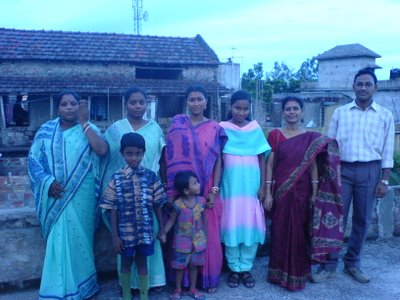Mission - Lohagad Fort
Lohagad Trek was one of the best and amazing trek I ever had in my life. Everyone use to say me that trekking in rainy season is awesome, so I thought why not try to taste this experience. And I can tell you that this trek was fantastic for me.
In 1670, Shivaji Maharaj won Lohgad fort and in the year 1751, Gaikwad and Dabhade family were incarcerated in this fort. Today, most of the forts are in dilapidated states, however Lohgad is still in much better condition. For trekker's Lohgad should be a real treat to visit giving a wonderful view from its top. Lohgad is situated about 5 Km. from Malavali station. We have to get down at Malavali station near to Lonavala. After crossing the Express-Highway & reaching Bhaje village we get straight route to Lohgad. 1½ hours walk from Bhaje will lead to Lohgadwadi. 15 min walk from Lohgadwadi will take you to the top. We can reach to the top of fort by stairs.
We started our journey by catching 6.30 Lonavala Local in the morning. After an hour we reached Malavali station. After reaching Bhaje village, we had some breakfast as poha and tea. Over here we came to learn something, which would help you also too. Take a look on this picture, it's too good...

Then around 9.00 am, we started the trek towards base village Lohgadwadi and then to the foot of the fort.
Being a well preserved fort the entrance to the fort is in good condition. The fortification are also quiet good. There is a mosque old Dargah at the top. From Lohgad, Tung and Tikona hills are seen. Going ahead from the old Dargah towards right there is small a temple of Lord Shiva. Going ahead we come across a small lake besides which there are drinking water reservoirs. This is only place on fort where we can get drinking water. After walking 15 to 20 min we come to a bigger lake.
To the western side of the fort is 'Vinchu Kata'. It is 1500m long & 30m wide part of the mountain, separated from the main part. This is most fascinating spot on the top of the fort. Viewing from the fort this portion looks like scorpion’s sting and hence it is called 'Vinchu Kata'. This 'Vinchu Kata' was used for keeping a watch on the nearby area. We all spent a nice time over there having photography sessions, etc. There is also a flag post at the end of Vinchu Kata.
We started our journey back to Lohgadwadi village around 1.00 pm and reached the base village very quickly. We had a nice lunch over there. It was a typical maharashtrian sort of thali and it was a bit spicy too. But we enjoyed the lunch very much. Every body relaxed over there for a while and headed towards the waterfall which is nearer to Bhaje Caves. Some people enjoyed the bath under waterfalls while others went to Bhaje Caves to have an insight into the caves.
The trekking has finally come to an end. We took 6.20 pm Local train towards Pune. We all played Antakshari all the way to Pune and it was a great fun all around. Everybody was watching our group singing songs loudly. We finally reached Pune station around 7.30pm and that was the end of one of the most amazing trek we ever had in our life.

















